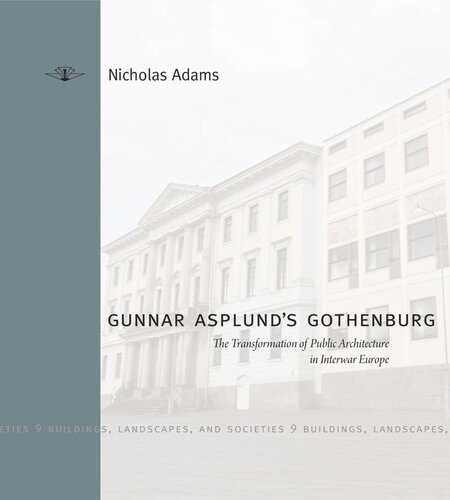

Most ebook files are in PDF format, so you can easily read them using various software such as Foxit Reader or directly on the Google Chrome browser.
Some ebook files are released by publishers in other formats such as .awz, .mobi, .epub, .fb2, etc. You may need to install specific software to read these formats on mobile/PC, such as Calibre.
Please read the tutorial at this link: https://ebookbell.com/faq
We offer FREE conversion to the popular formats you request; however, this may take some time. Therefore, right after payment, please email us, and we will try to provide the service as quickly as possible.
For some exceptional file formats or broken links (if any), please refrain from opening any disputes. Instead, email us first, and we will try to assist within a maximum of 6 hours.
EbookBell Team

5.0
30 reviewsIn the west coast port city of Gothenburg, Sweden, the architect Gunnar Asplund built a modest extension to an old courthouse on the main square (1934–36). Judged today to be one of the finest works of modern architecture, the courthouse extension was immediately the object of a negative newspaper campaign led by one of the most noted editors of the day, Torgny Segerstedt. Famous for his determined opposition to National Socialism, he also took a principled stand against the undermining of urban tradition in Gothenburg. Gothenburg’s problems with modern public architecture, though clamorous and publicized throughout Sweden, were by no means unique. In Gunnar Asplund’s Gothenburg, Nicholas Adams places Asplund’s building in the wider context of public architecture between the wars, setting the originality and sensitivity of Asplund’s conception against the political and architectural struggles of the 1930s. Today, looking at the building in the broadest of contexts, we can appreciate the richness of this exquisite work of architecture. This book recaptures the complex magic of its creation and the fascinating controversy of its completed form.